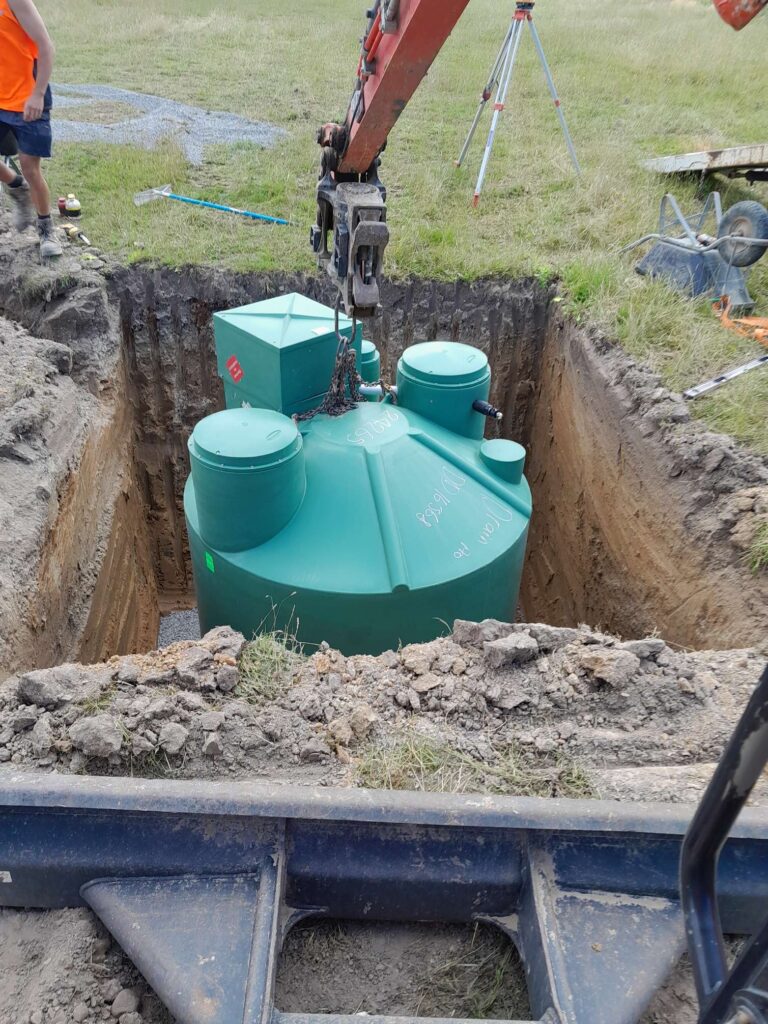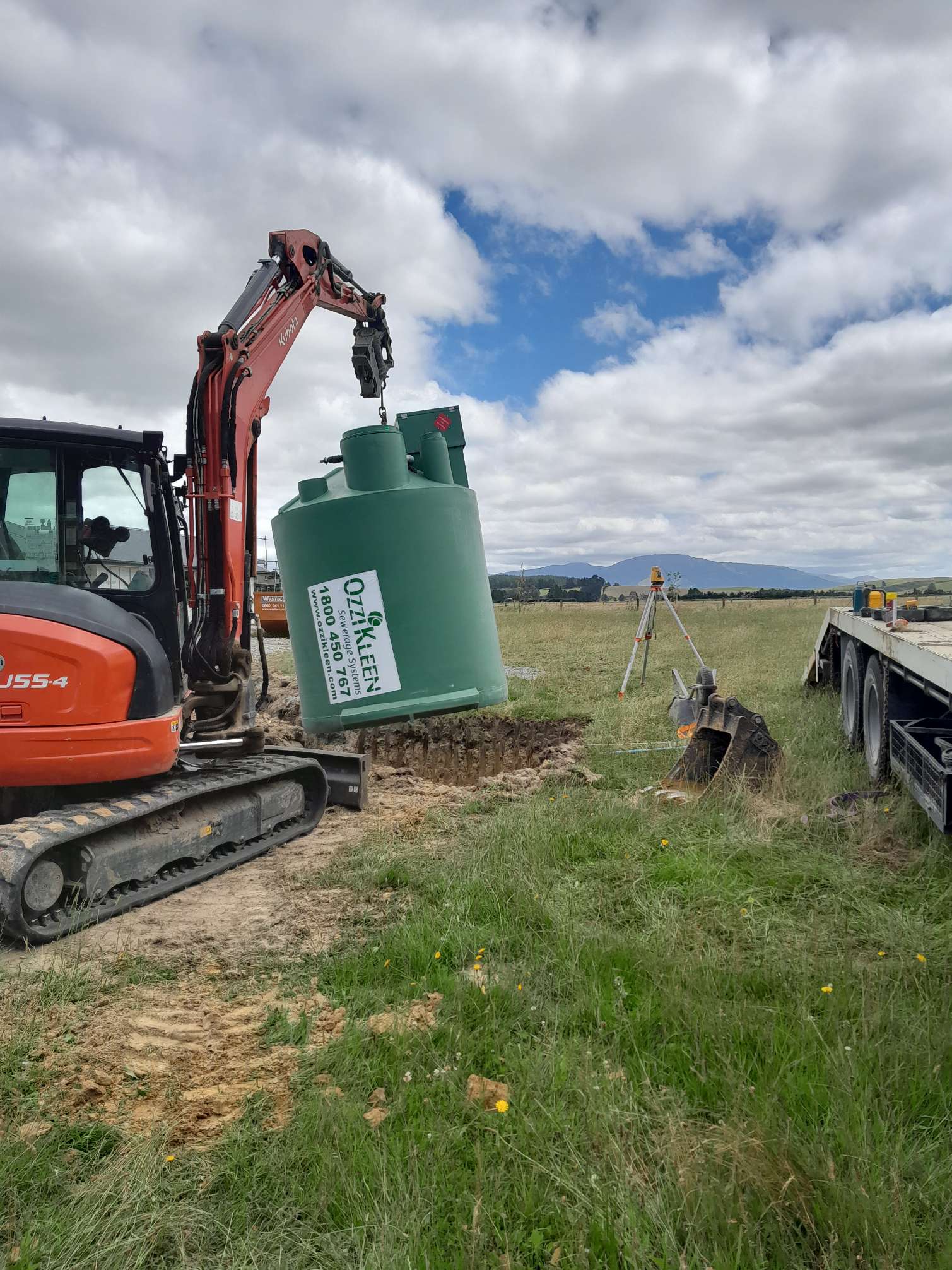Why Septic Tank Sizing Matters in Christchurch
Avoiding Overflow, Odours, and Premature System Failure
Selecting the correct septic tank size is crucial for ensuring your wastewater system functions efficiently and hygienically. An undersized tank can lead to frequent overflows, foul smells, and even system backups.
Over time, these issues can cause damage to the tank itself, the surrounding drainage field, and the environment. For Christchurch homeowners, where soil types and seasonal rainfall vary widely, sizing your septic system properly from the start helps you avoid long-term headaches.
Complying With Christchurch Council Requirements
The Christchurch City Council, along with Environment Canterbury (ECan), enforces strict regulations around on-site wastewater management. Your septic system must meet design standards not only for safety and environmental protection but also for property compliance.
Sizing plays a critical role in determining whether your system will pass inspection and receive the necessary consents.
Matching System Size to Property Type and Usage
A septic tank must be tailored to the specific demands of your property. This includes the number of people living in the home, how much water is used daily, and whether additional systems like greywater recycling are in place.
A one-size-fits-all approach simply doesn’t work, especially in Christchurch where both urban and rural homes have varied water usage profiles.
Factors That Influence Septic Tank Size
Household Size and Number of Bedrooms
The most common sizing metric in New Zealand is based on the number of bedrooms in a home. A three-bedroom house typically requires a minimum 3,000-litre tank, while a five-bedroom home might need 5,000 litres or more. The logic is simple: more people generate more wastewater, and the tank must have the capacity to store and process that volume safely between pump-outs.
Daily Water Usage and Fixture Count
Beyond headcount, the number and type of water fixtures in your home matter. High-flow showers, multiple toilets, dishwashers, and washing machines all contribute to daily water output.
Christchurch homes with modern appliances or water-efficient systems may manage with a smaller tank, while older or larger homes often need greater capacity to prevent overloading.
Soil Type and Drainage Conditions
In areas with clay-heavy or poorly draining soils, common in parts of Canterbury, the drain field may require special consideration. Slower percolation rates mean wastewater takes longer to disperse, increasing the importance of having an adequately sized tank to hold effluent before it enters the drainage system.
Christchurch Weather and Ground Saturation
Christchurch’s weather can impact septic system performance, particularly during wet winters or heavy downpours. Excessive ground moisture can slow down effluent absorption in the drain field, which means the tank must accommodate higher-than-normal holding volumes during peak rainfall periods. A slightly larger tank provides a buffer against seasonal saturation.
Common Septic Tank Sizes and What They Support
Small Tanks (Up to 3,000L): Suitable for 1–2 Bedroom Homes
Compact septic systems are best suited to smaller households with minimal water use. These are ideal for holiday homes, rural cottages, or urban dwellings with one or two bedrooms. However, their limited capacity requires strict water use discipline and more frequent pump-outs.
Medium Tanks (3,000L–4,500L): Ideal for Average Families
The 3,000 to 4,500-litre range is the most common choice for standard three- or four-bedroom homes in Christchurch. These tanks handle daily usage comfortably, providing sufficient storage between scheduled maintenance, even for active families with multiple water-using appliances.
Large Tanks (5,000L+): Required for Larger Households or Multi-Dwelling Sites
For properties with five or more bedrooms, extended families, or granny flats on the same wastewater system, a larger tank is essential. Some rural Christchurch properties with multiple structures or additional facilities like home offices or workshops also require larger tanks to cope with the added load.

Christchurch Council Guidelines on Septic System Capacity
Permitting and Compliance for New Installations
Any new septic tank installation in Christchurch must adhere to Building Act requirements and may also fall under Environment Canterbury’s regional rules. A septic system design that matches the size and use of your home is essential for obtaining a building consent. You’ll need to supply sizing calculations, site plans, and potentially a wastewater engineer’s report.
Onsite Wastewater Design Standards in Canterbury
The AS/NZS 1547 standard is commonly used to determine the appropriate sizing of septic systems in New Zealand. It considers not just the tank volume but also the size of the effluent disposal area, local soil types, and environmental sensitivity of the land. Christchurch homes near waterways or in flood-prone areas may be required to meet more stringent design conditions.
When to Seek an Engineer or Environmental Assessment
In complex or high-risk zones, or if your property has challenging terrain or poor drainage, engaging a wastewater design specialist is essential. These professionals can assess site-specific conditions and ensure that your system is correctly sized and fully compliant with local regulations.
Signs You May Need a Larger Septic Tank
Frequent Pump-Outs or Overflow Issues
If your current septic tank needs to be emptied more than once a year, it may be undersized for your household’s needs. Frequent overflows are a clear indicator that the tank isn’t coping with your daily wastewater volume.
Bad Smells or Standing Water Around the Drain Field
Persistent odours or soggy ground near your effluent disposal area can indicate that your system is overwhelmed. When wastewater is not treated and dispersed efficiently, it backs up, saturating the drain field and sometimes rising to the surface.
Additions or Renovations That Increase Water Use
Adding bedrooms, installing a second bathroom, or upgrading to larger water fixtures will increase your household water usage. In many cases, your existing septic tank will no longer be compliant with its original design intent and may need to be upgraded.
Professional Help vs DIY Estimates
Benefits of Getting a Septic Design Assessment
A professional assessment ensures your tank is sized accurately and meets both current and future needs. It also provides you with documentation for council consents and helps avoid the risk of underbuilding your system, which could lead to expensive retrofits.
Mistakes to Avoid When Estimating Tank Size
Don’t base your decision solely on the cheapest option or what worked for your neighbour. Every property is different. Underestimating peak flows or ignoring soil conditions can lead to system failure, environmental harm, and non-compliance with council regulations.
Local Christchurch Installers Who Can Help
There are many reputable septic system installers across Christchurch and Canterbury. Look for providers who offer full design-and-install packages and have experience working with local council guidelines and Canterbury soil conditions.
Long-Term Benefits of Correct Septic Tank Sizing
System Longevity and Reduced Maintenance
A correctly sized tank reduces stress on your system and prevents premature component failure. This means fewer pump-outs, lower servicing costs, and longer lifespan for the tank, pump, and drain field.
Environmental Protection and Efficient Waste Treatment
Properly sized tanks prevent the release of untreated or partially treated effluent into the environment. This is especially important in Christchurch’s sensitive waterways and groundwater zones, where contamination can have serious ecological and public health impacts.
Avoiding Costly Upgrades or Legal Issues Down the Track
If your system is found to be non-compliant during a sale or inspection, retrofitting a new tank or drain field can be expensive and disruptive. Getting the sizing right upfront protects you legally and financially in the long term.


